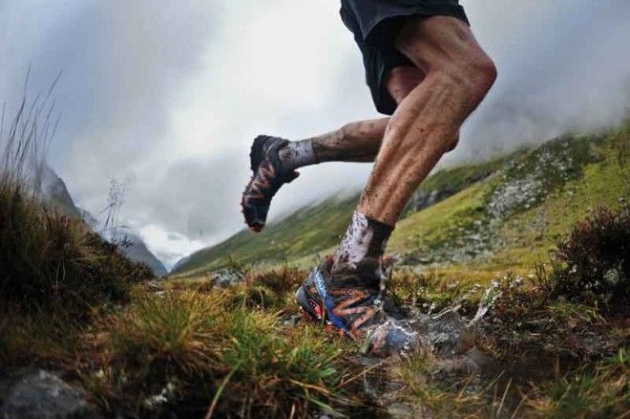Working Out Your Legs
By MH Staff - Posted on 10th February 2015

1. I want to use a skipping rope for cardio. Can I do it without killing my knees? Remember you aren’t Rocky Balboa. Doing his one-foot hop is like having Apollo Creed and Drago pound your kneecaps. The keys to pain-free jumping: (1) Stand Tall, (2) land on both feet, and (3) stick to brief spurts, says Bill Hartman, co-owner of Indianapolis Fitness and Sports Training. “Standing tall shifts more of the impact to your hips, which are able to bear more load than your knees can,” he says. “And landing on both feet spreads the impact to two places, not just one.” Another mistake that can lead to injury? “Jumping for too long or too often can overload the tendons in your knees,” Hartman says. For a full body workout that minimizes joint impact, combine intervals of jumping with floor moves that will help strengthen your core.
2. I hate warming up before a run. Is there a quicker way to prepare? Warming up will always feel like a chore if you spend time on exercises that don’t matter. This one-minute routine revs up your central nervous system and prepares your muscles for the “dynamic” nature of running, says Tony Gentilcore, trainer and co-founder of Cressey Performance. Do 10 reps. Stand with your feet shoulder-width apart. Lift your left knee as high as you can and pull it to your chest. Release it and step into a lunge – left knee bent 90 degrees, right leg extended behind you, and hands on the floor inside your left foot. Push your hips forward to feel the stretch in your left hip. Without moving your feet or hands, raise your hips as high as you can to feel the stretch in your right hamstring. Return to the lunge. Keep your left palm planted as you raise your right hand as high as you can, twisting your torso. Return your right hand to the floor. Step out of the lunge; repeat the pattern with your right leg – so you’ll “walk” during the reps.
3. If I’m running and hit a red light, should I stop or jog on the spot? Neither. If you stand there, you risk cooling down, and if you jog in place, you just look silly, says personal trainer Rachel Cosgrove. “A smarter strategy is to do a dynamic stretch. This keeps your glutes firing and your ankles and hips mobile, both of which help prevent muscle strains.” Cosgrove recommends this stretch: stand in a staggered stance, left foot forward, hands on your hips. Bend your left knee and push your hips forward to stretch your hip flexors while engaging your glutes, and press your right heel into the ground. Reach up with your right arm and hold for five seconds. Then step back with your left foot and switch sides. Keep at it until the light turns green and you’re ready to get going again.
4. I’m trying to build bigger leg muscles, but I feel like my running is suffering. What are my options? You need an efficient workout that provides a three-way pay-off: more leg strength, additional explosive power and better muscle elasticity, says trainer and strength and conditioning coach Craig Friedman. Do three rounds of the following circuit twice a week while continuing your running. Soon you’ll be as fast as you look. Reverse Lunge: Holding a pair of dumbbells at your sides, step back with your left leg and lower your body until your front leg is bent 90 degrees and your back knee nearly touches the floor. Keeping your torso upright, push yourself back up to the starting position; repeat with your other leg. That’s one repetition. Use dumbbells heavy enough that you find it difficult to do five reps. Reactive Step-up: place your right foot on a sturdy 15 to 25cm step with your arms back. Jump vertically, driving off your right leg by extending your hip, knee and ankle. Land in the same position and repeat. Finish six reps on one leg and repeat on the other. Quad/hip Flexor Stretch: Stand in front of a bench in a staggered stance. Kneel so that your front leg is bent 90 degrees, your back knee is on the floor and the top of your back foot rests on the bench. Keeping your core tight and your back straight lean forwards and tighten the glute muscle on your back leg. Hold for two seconds. Complete six reps on each leg.
5. How do I build big sporty calves? Genetics play a big role in the development of the calf muscle group. Having said this, there are various techniques to induce growth in this rather non-responsive region. There are two possible approaches from kinesiologist Richard Sutton: Plan A: some experts believe that performing as many as 10 to 20 sets in a single session has proven most effective. Another suggestion is to reduce the rest periods between sets to 20 to 30 seconds. Finally, you could train the calves every 36 to 48 hours (naturally you would not be performing more than four to six sets per session). The best thing to do is trying the aforementioned techniques independently and see what works best for you. The suggested number of reps may vary from 12 to 30. Plan B: “In my opinion,” says Sutton, “conventional gym training is not going to give you the results you desire.” If it were that effective, so many men going to gym wouldn’t have similar complaints, right? By contrast, how often do you see a professional sportsman with disproportionate calves? “The greatest gains in tone and shape come about from activities uses to improve athletic performance such as hopping, skipping, plyometric, high speed agility training and sprinting. Essentially, you would be using the muscle group in a manner that is more consistent with its intended function. “If you are serious about developing sporty calves,” says Sutton, “perhaps you should explore this route.”
6. Is there an exercise that will reduce the time I need to spend training my legs? Try the Bulgarian split deadlift. It develops all the major muscles of your lower body. The instability of the exercise (because its done while standing on one leg) calls more muscle into play as you try to stay balanced, says certified strength and conditioning specialist Alwyn Cosgrove. Perform two or three sets of three to five reps to gain strength; do two sets of eight to 12 reps to build muscle. Place a loaded barbell on the floor two to three feet in front of a bench. Facing away from the bench, place one foot on the floor so your shin touches the barbell, and rest the instep of your other foot on the bench. Keeping most of your weight on your front leg, bend your front knee and lean forwards to grab the bar with an overhand grip. Lift the bar as you return to an upright stance, then return to the starting position. Complete your reps then switch legs and repeat.
7. I prefer to do my squats on a Smith machine. Is this bad for my knees or back? Squats of any type, whether with free weights or on a Smith machine, can be dangerous if they’re performed incorrectly. The most common free weight mistake people make is leaning their upper body too far forwards, which shifts weight distribution from the hips and thighs to the knees and lower back. its difficult to flub your form in this way with a Smith machine, because the barbell is in a fixed vertical plane. However, the very fact that the machine allows less freedom of movement can also set you up for injury: if you don’t lean far enough forward during a squat, you can strain your back and knees. So which approach is best? Exercise scientist Dr Shawn Arent recommends free weight squats because you’ll activate more stabilizing muscles than you would with a Smith machine. But Arent says to squat without weights to enforce correct form: with your feet slightly wider than your hips, chest up and knees in line with your toes, lower your body by pushing your butt back and bending your knees simultaneously, until your thighs are at least parallel to the ground – deeper is better. You want your hips and knees to flex at the same time. Don’t round your back. Once you have this down, do a few warm-up sets of squats, with 50-75 percent of your targeted load, before beginning your full squat routine.
8. I have chicken legs. What’s the best way to build my calves? The same way Arnold built his: isolation. Before he was Mr Olympia, Schwarzenegger cut the legs off his sweat pants and targeted his skinny calves until they looked as buff as his upper body. In your case, skip the scissors and just do standing and seated calf raises as a slow, controlled tempo. “Most guys blow through sets and move too quickly to improve the soleus and gastrocnemius, the two muscles that make your calves look meaty,” says strength and conditioning coach Mike Robertson. “Slowing the exercise minimizes contributions from other muscles and places stress on the muscles in your calves.” Aim for two sets of 20 reps of both seated and standing calf raises three times a week. Take two seconds to raise the weight and two seconds to lower it, and hold the bottom position for two seconds. 9. What’s the best way to avoid hamstring injuries? Strengthen the muscles. If you’re like most men, you emphasize leg exercises that build your quads, says certified strength and condition coach Bill Hartman. “This can cause an imbalance that puts your hamstrings at risk when you accelerate and decelerate rapidly.” He recommends the stability-ball hip raise and leg curl. It’s better than a hamstring curl on a machine because it trains your leg muscles in a more functional way, and also activates your lower back and core muscles. Lie face up on the floor and place your calves on a stability ball. Push your hips up so your body forms a straight line from your shoulders to your knees. Without pausing, pull your heels towards you and roil the ball as close as possible to your butt. Pause for two seconds, and reverse the move until your body is in a straight line. Then lower your hips to the floor. Do two sets of 10 reps, three times a week. Please share this article by using the link below. When you cut and paste an article, Men's Health misses out on traffic, and our writers don't get paid for their work. Email tellMH@media24.com to buy additional rights. Article link - www.mh.co.za/fitness/faqs-working-out-your-legs/



